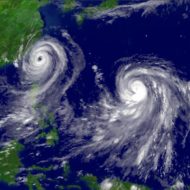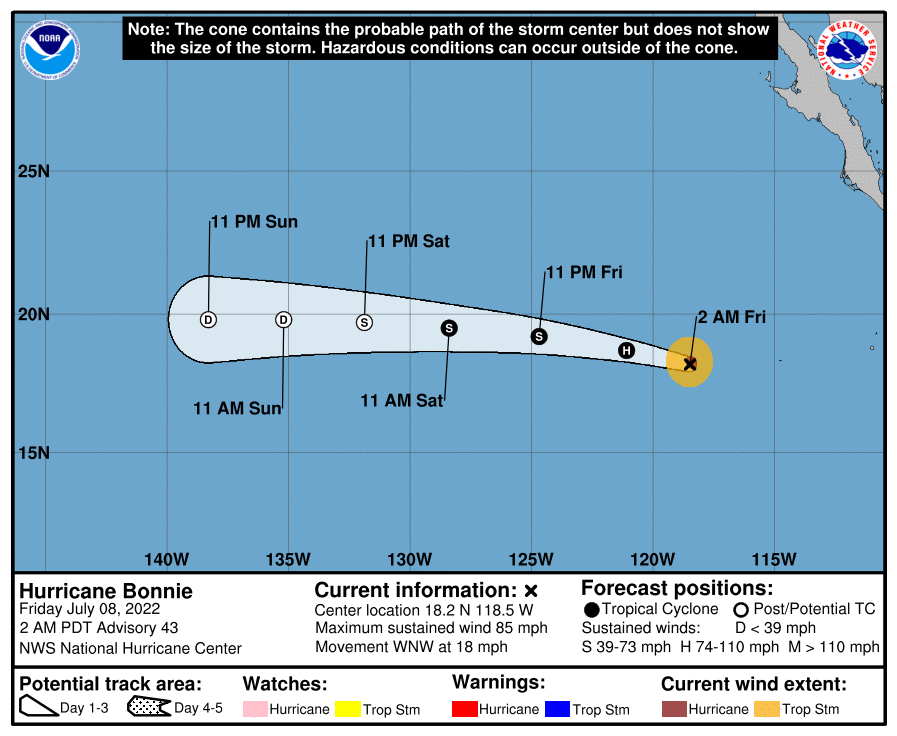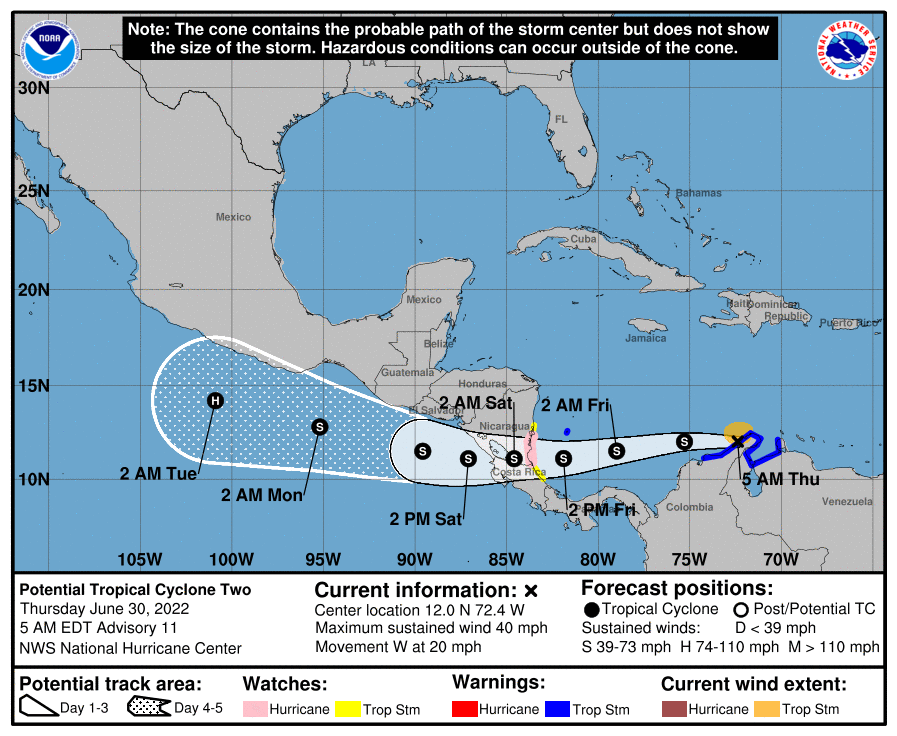000 WTPZ45 KNHC 140901 TCDEP5 Hurricane Darby Discussion Number 20 NWS National Hurricane Center Miami FL EP052022 Issued by NWS Central Pacific Hurricane Center Honolulu HI 1100 PM HST Wed Jul 13 2022 Darby's satellite presentation was still quite impressive near analysis time this evening, with persistent cold cloud tops surrounding a clear eye. However, some degradation in the cyclone's appearance has been noted over the past couple of hours. The eye has cooled and become a little elongated, and the cyclone appears to be entraining environmental dry air, leading to recently-observed breaks in the eye wall. The initial intensity is estimated to be near 95 kt, representing a slight weakening from the previous advisory, with Darby now below major hurricane strength. This estimate is in line with a blend of the subjective Dvorak intensity estimates from HFO/TAFB/SAB, the latest UW-CIMSS objective Dvorak estimate of 95 kt, and a SATCON value of 97 kt. Despite Darby holding its own over the past 24-36 hours, significant weakening is anticipated over the next couple of days. This is supported by all of the reliable guidance, with Darby expected to dissipate by this weekend as it passes south of the main Hawaiian Islands. The updated intensity forecast closely follows the consensus IVCN, as well as the SHIPS guidance. Darby lies on the southwestern periphery of a ridge aloft, in an area characterized by light to moderate vertical wind shear. As Darby is driven west-northwestward by a mid- and upper-level ridge to the northeast in the short term, it will move closer to a upper-level trough to it's northwest, into an environment characterized by stronger vertical wind shear. This shear will allow the cyclone to efficiently ingest the dry mid-level air that prevails, while ths system moves over sub-26C SSTs. Darby is expected to degrade to a shallow system over the next 48 hours, with a persistent strong surface high north of Hawaii forcing Darby to accelerate as it makes a turn toward the west. The updated track forecast is close to the previous forecast, and lies very close to the GFEX. Darby is crossing into the central Pacific basin, and this will be the final NHC advisory on this system. Future information on Darby can be found in Forecast/Advisories issued by the Central Pacific Hurricane Center beginning at 1500 UTC under AWIPS header HFOTCMCP1 and WMO header WTPA21 PHFO. For information specific to the Hawaiian Islands, users should continue to consult products from the National Weather Service Forecast Office in Honolulu, Hawaii, at www.weather.gov/hfo. FORECAST POSITIONS AND MAX WINDS INIT 14/0900Z 16.2N 139.5W 95 KT 110 MPH 12H 14/1800Z 16.6N 141.6W 85 KT 100 MPH 24H 15/0600Z 17.0N 144.2W 70 KT 80 MPH 36H 15/1800Z 17.1N 146.9W 55 KT 65 MPH 48H 16/0600Z 17.0N 149.8W 40 KT 45 MPH...POST-TROPICAL 60H 16/1800Z 16.9N 153.3W 30 KT 35 MPH...POST-TROP/REMNT LOW 72H 17/0600Z...DISSIPATED $$ Forecaster Birchard






